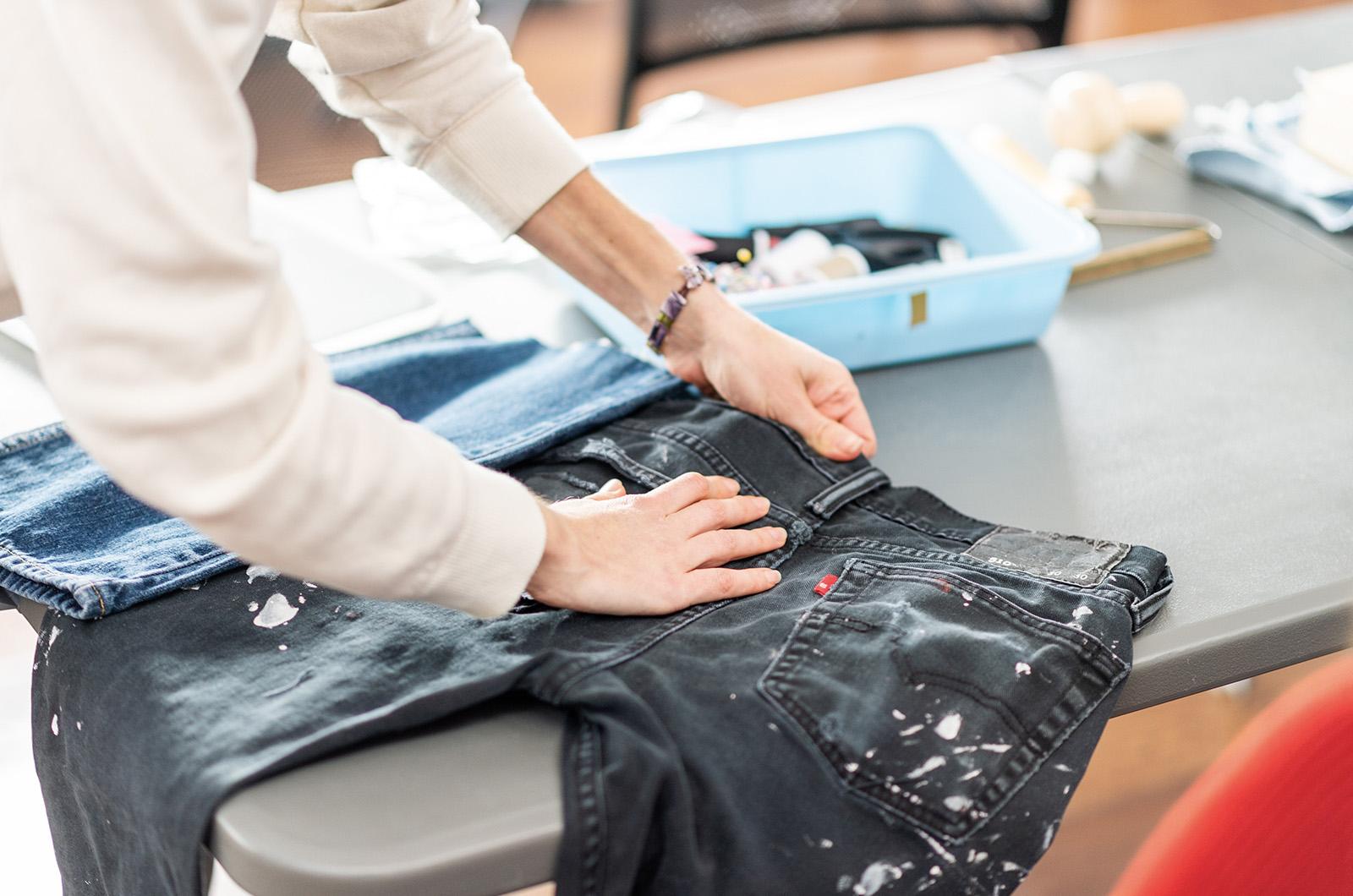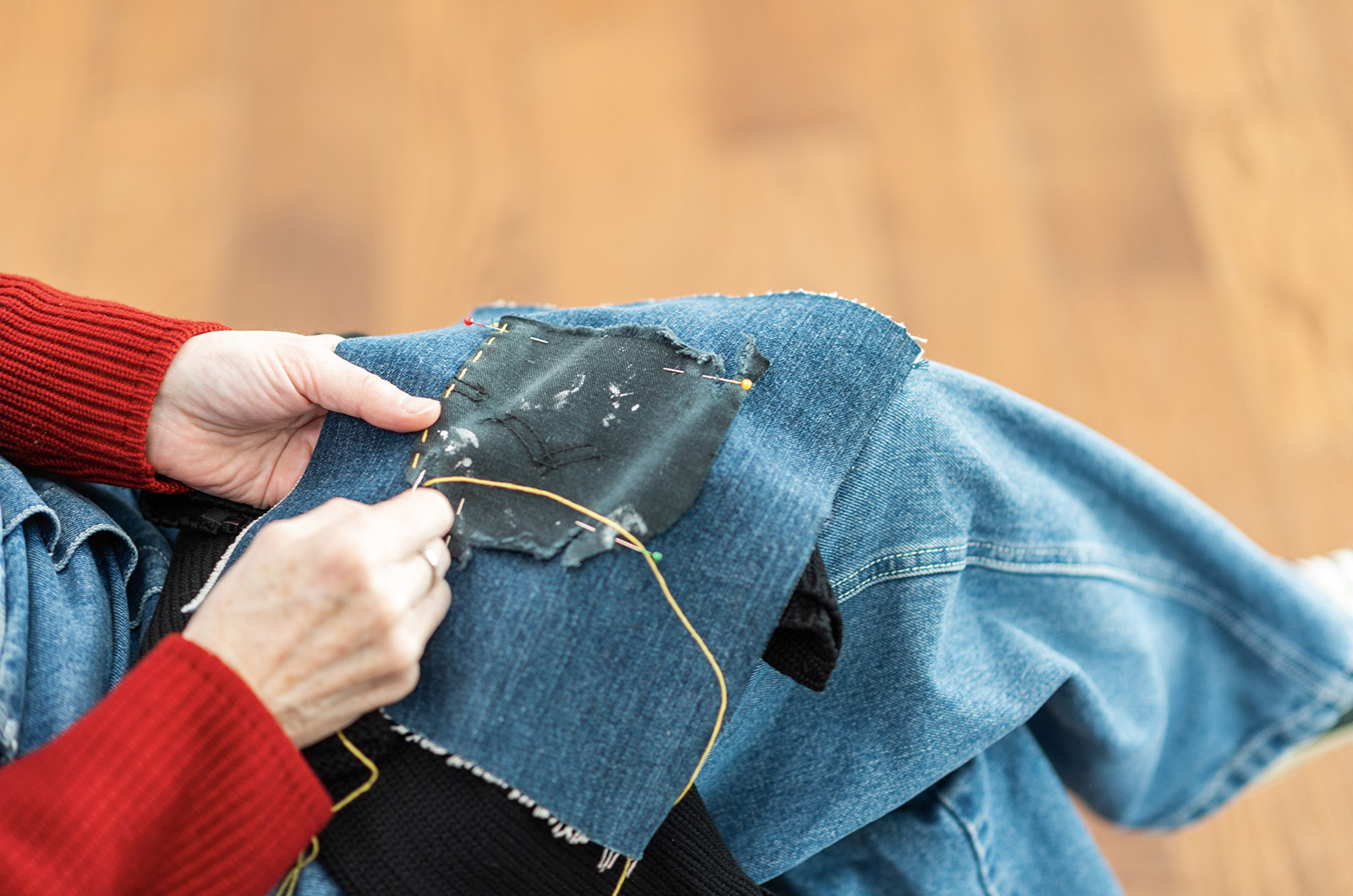At the first meeting of the new mending club at the Edgartown Library, exhibit A was a pair of ripped denim pants, torn and paint stained. The pentagonal twill of the back right pocket was pockmarked with holes and shredded along the edges, but in due course the fabric would be salvaged through a Japanese stitching process called boro sewing.
Emily Becker, who has a degree in fashion design, led the workshop Saturday morning. Now, she hopes to be able to contribute some of that expertise back to the island community. By building this monthly club around the techniques needed to extend a garment’s lifespan, Ms. Becker said she is aiming to change the attitude that people take towards their clothing.
“If you know how to fix things, you find yourself becoming okay with spending a little bit more on something that will last,” she said, noting that each item fixed is one less that ends up in the dump. Even a completely shredded garment can be cut up for patching.
She added that the longer you hold on to an article of clothing, the more special it becomes.
“We all have that one pair of work pants that fits better than all the rest,” she said.
And the more special the pants, the higher the stakes for each repair. The first step in fixing a pair of ripped pants, she said, is similar to milling wood or cutting a ribeye steak.
“You have to find the grain,” explained Ms. Becker. “All fabrics have a grain, like wood or meat or most natural things.”
The Japanese boro technique, unlike conventional sewing where stitches are added just along the seam, combines two pieces of fabric with a dense matrix of side-by-side stitches. The overall effect is a homespun look, like a hand-drawn sheet of dotted line paper.
While ironing down a piece of precisely measured denim to patch another participant’s busted jean shorts, Ms. Becker explained the value of being methodical while fixing a garment.
“It’s like architecture for your body,” she said, stepping away from her ironing to draw out the fabric schematics of a pair of pants. Each leg is a fabric tube, the two long edges connected with one long seam. Both the tubes are then connected to each other at another seam, the “j-hook.” That seam is strong, but is also always subject to intense tension and wear.
It is, therefore, one of the most commonly torn areas, and due its intersecting seams, one of the toughest to patch. But Ms. Becker made the work look easy Saturday morning, deftly marking the edges of denim patch with a slim pink rectangle of tailor’s chalk, and calculating the topology of each fold and stitch.
It might be difficult at first, she acknowledged, but with a little experience it all comes easy. She recounted a recent experience trying to learn macrame.
At first, she said, she struggled to pick it up, before unlocking childhood memories of braiding friendships bracelets.
“It’s basically the same process,” she said, “It’s all muscle memory. It’s all just practice and muscle memory.”
The mending club will meet the third Saturday every month at the Edgartown library. Participants are encouraged to bring clothes for fixing, and supplies are available.








Comments (1)
Comments
Comment policy »